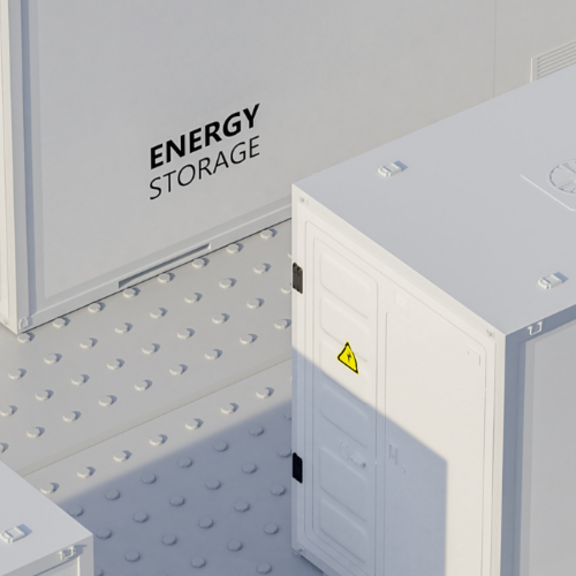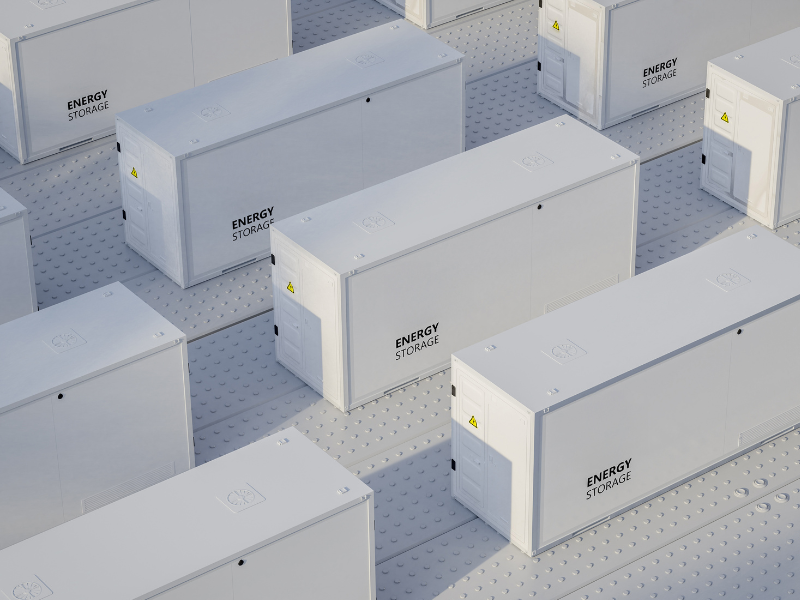

Large battery storage devices (BESS) are an important component of modern energy infrastructure. They enable the integration of renewable energies, improve grid stability and ensure a reliable energy supply. However, as with Everyone's electrical installation, there are potential safety risks. Insulation faults are a central risk. If these go unnoticed, they can lead to serious problems - from unexpected system failures to an increased fire hazard.
This case study shows how the safety and availability of a 5 MW/10 MWh large battery storage device could be significantly improved through targeted monitoring and fault detection.
An operator of a solar park planned to efficiently feed the energy generated into the local grid via a connected large battery storage device (BESS). The installation comprises:
As the system was run as an unearthed IT network, particular attention was paid to electrical safety and availability.
The aim was to detect insulation faults at an early stage in order to avoid unplanned idle states, fire risks and cost-intensive damage.
The challenge:
An insulation fault occurs when a live conductor comes into contact with earth. In IT systems, the first fault does not immediately lead to a short-circuit - but if it remains undetected, a second fault can have serious consequences. Risks include:
To prevent these risks, a multi-stage monitoring system was implemented for automated fault detection and precise localisation.
Monitoring concept
A multi-level monitoring system was installed for the detection and localisation of insulation faults. Monitoring was carried out at strategically important points within the installation:
However, the PV side was monitored without live earth fault location, as a different protection concept was implemented in this part of the system. The decision was made on the basis of a risk assessment, which focussed on the safety of the energy feed-in and feed-out of the BESS.
1. insulation monitoring of the entire system:
The entire battery system was equipped with a central insulation monitoring device (IMD).
2. fault localisation with earth fault detection system (EDS):
In addition, earth fault detection systems (EDS) were used.
3. permanent monitoring of the insulated battery bank:
During maintenance, the affected battery bank continued to be monitored separately. An additional insulation monitoring device ensured that the battery could be safely put back into operating state after the repair.
The implementation of the monitoring system led to a significant improvement in the safety and operational reliability of the BESS.
1. Increased safety:
2. Less downtime:
3. Data-supported fault analysis:
4. Compliance with safety standards:
The case study shows that insulation faults pose a serious threat to large battery storage devices. Without reliable fault detection, they can lead to increased power on, system failures or even fires.
A proactive monitoring concept is essential for the safety and efficient operation of modern large battery storage devices.

Unnoticed insulation faults are among the greatest risks in modern BESS systems. You can find out how these can be recognised early on, what role the type of system plays and which protection concepts really work in our latest blog posts.

Find out how to operate large-scale PV systems, wind power and storage solutions safely and in compliance with standards. Our brochure presents tried-and-tested solutions that minimise risks and increase the availability of your systems - in a compact and easy-to-understand format.